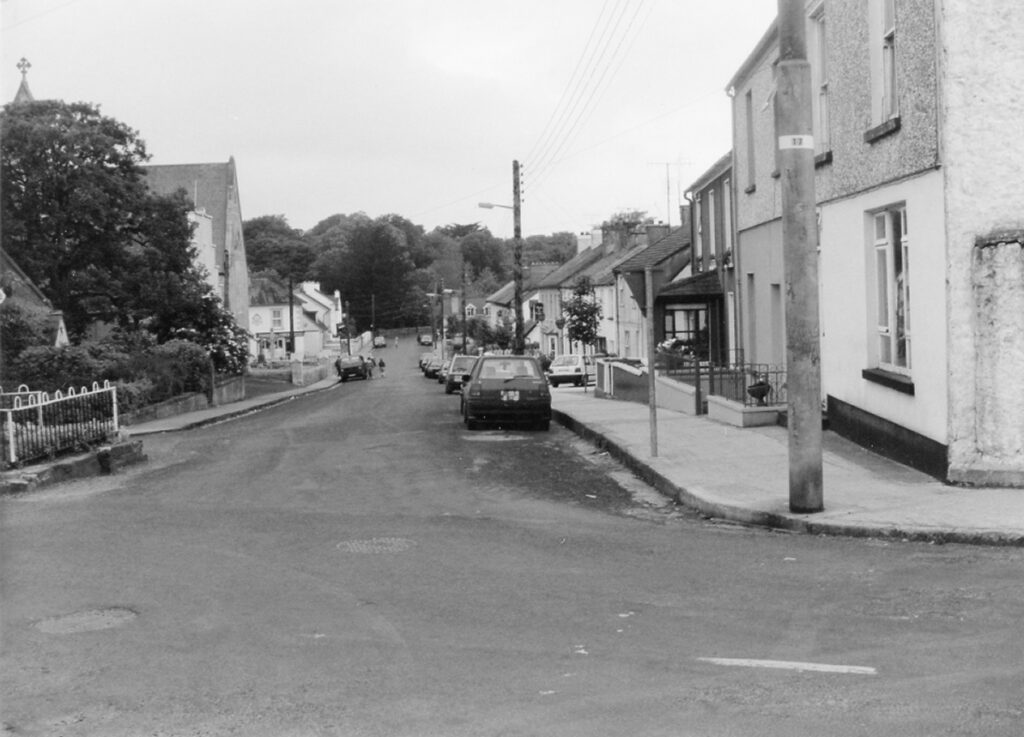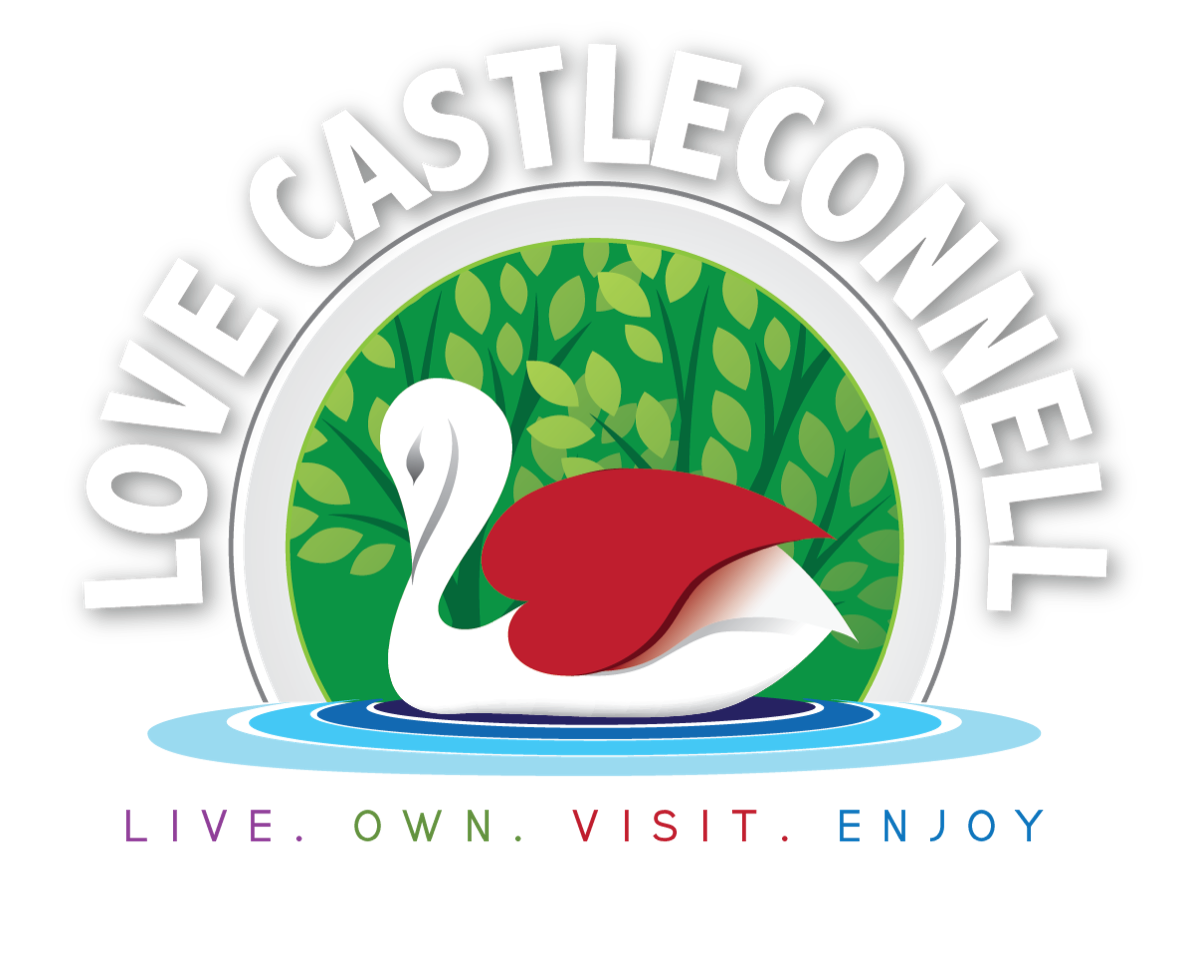By Ken Kingston
If my memory serves me right, it was Charlotte Brontë who wrote: “memory in youth is active and easily impressible; in old age it is comparatively callous to new impressions, but still retains vividly those of earlier years.”
Though I don’t think I am more “callous to new impressions”, memory is hesitating and it takes longer to remember things. However, I have found that, perhaps, she was right about retaining the memories of earlier years, at least some of them.
Having lived in England for forty years, I have not set foot in Castleconnell in all that time. This summer, as President of the Irish National Services Museum Association, I was an invited guest at the unveiling of “Ireland’s National Monument to the Fighting 69th Regiment and Brigadier General Michael Corcoran” at Ballymote, Co. Sligo, by the Honourable Michael Bloomberg, Mayor of New York, on August 22. While staying with my brother, Gerard, in Co. Dublin, for a short time, he showed me a copy of An Caisleán, 2005. In it, among other things of interest to me, was a photograph of the Fitzgerald School of Dancing in the 1950s. There, among the rows of young people of the village were my sister, Sheila, and myself. I amazed myself by being able to name several others, without hesitation.
On returning home, I started to wonder what else I could remember. I searched deep but initially nothing sprang to the surface of my memory. As the days passed, it became important to me to try to remember and, gradually, snippets came from nowhere. I am sure there should be an awful lot more.
Among the earliest memories was of that of standing outside our house, “The Bungalow”, watching bigger boys playing football on the road by Carroll’s field, between our house and Carroll’s shop. One of the players came running down chasing the ball, which had either gone wide or had been a goal. Unfortunately for me, he knocked me over and broke my collarbone. I was tiny but I do remember the pain. Next, I remember the building of the village hall – a truly community effort. As I recall, the young men of the village all worked on the project, giving their spare time to the physical building of the hall. I remember being really surprised to see the local curate actually taking part in the manual labour. This was an important milestone in the life of the village. Concerts, competitions, even the County Féis, were held here. The previously mentioned photograph of the Fitzgerald School of Dancing was taken on the stage and it was here that I won a medal for Scéalaíocht, in the Féis (1962 or 1963). I am still very proud of this medal. It is silver, bearing a Dublin hallmark for 1960, with enamelled arms of the Four Provinces in small circles at the four extremities – Ulster arms at the top, Munster arms at the base, Connacht at the left (west) and Leinster at the right (east). Celtic scrolls between each of the arms complete a circle. A circular band inside this bears the inscription Féis Conndae Luimnigí. The very centre has an open book imposed on an Irish harp.
I also played the tin whistle, for a short time, in the village band. I remember that I was not very good at it. Music was never my forte, though I did take music lessons in Limerick and passed The Royal Irish Academy of Music Preliminary Pianoforte Examination, 1961. However, the constant rapping of a pencil on the knuckles, as a punishment for hitting the wrong keys, became a little tedious. I also remember that retaliation did nothing for the progression of my piano lessons. I have not played a musical instrument since.

Religion played a huge part in the village life and early memories of the retreats have remained with me – the rather terrifying but fantastic sermons delivered by preachers from religious orders, who came to our church to keep us on the straight and narrow. I can recall a certain lady member of the congregation, who burst into tears at one of these services. Jehovah’s Witnesses from Limerick created a rather unnerving atmosphere in their efforts to convert us as we came out of Sunday Mass. This effort was not sustained for too long a period. Another thing, which seemed rather strange to me at the time, was the arrival of a curate who owned a couple of greyhounds. This was something one expected from gambling men, not men of the cloth. The next curate to arrive possessed a horse. One did not expect to come across a priest out riding. This seemed to me to be the prerogative of the rich.
Swimming in the Shannon was also a great pastime of the young in the village. We would swim near the bridge, which crossed over to Co. Clare. A number of us, including my late brother, Harry, were fishing on a stone weir near the World’s End when some boys on bicycles, wearing their swimwear, came past shouting that someone was in trouble. We went to the World’s End but there was nothing we could do. A boy had already drowned. He was visiting a family in the village. A search party eventually found his body. There were other tragedies I recall. An infant, who lived on The Lane, was run over by a reversing coal lorry, while another child was killed by a kick from a horse near the Tontines.
Unknown to my father or mother, at certain times, I would be paid a couple of pence to collect beer from Castleconnell Railway Station, where it would arrive by train. I would place the beer on a two-wheeled luggage trolley and negotiate it down the station steps. It was then pushed to its destination – Richardson’s public house. The most difficult part of this operation was the step-negotiation. A wooden barrel of Guinness, when it had fallen down several stone steps was prone to cracking. When this happened, a creamy coloured liquid would squirt out all over the place. One would then have to slow down; pray the beer would settle and push hit very gently to the pub, in order to receive payment.
The village “cinema” was the old wooden hall, which seemed to hang out over the River Shannon, at The Spa. It was enjoyable, even if it was a little cold, windy and, sometimes, tended to be a little rowdy. Those who misbehaved during the film were liable to receive a light blow from a torch. The programme included Zorro and Hopalong Cassidy, and the cowboys (and cowgirl) often featured were Roy Rogers and Dale Evans, Gabby Hayes, Tom Mix etc.
I also recall seeing torch-lit processions in the village when Republicans, who had been interned without trial in the Curragh, were released and returned to the area.
It is claimed that everyone remembers where he/she was on November 22, 1963, when he/she heard that President John F. Kennedy had been assassinated. At first, people thought it had to be some sort of sick joke. It had been less than five months since he had made a speech to the Irish Parliament in Dublin and presented the flag of the 69th Regiment New York State Volunteers, Irish Brigade, of the American Civil War, to the people of Ireland, June 28, 1963. The flag is on display in Leinster House, Dublin. I saw it during my last visit. Where was I when I heard the news? I recall being present at one of Davy Quaid’s evening Irish language classes when someone arrived and broke the news. Everyone present was astounded.

